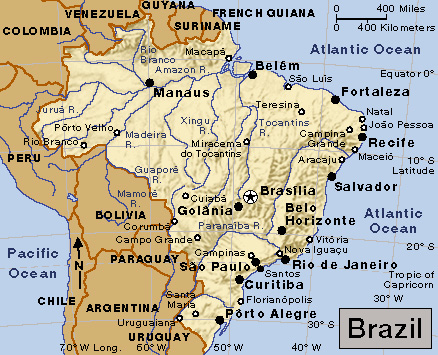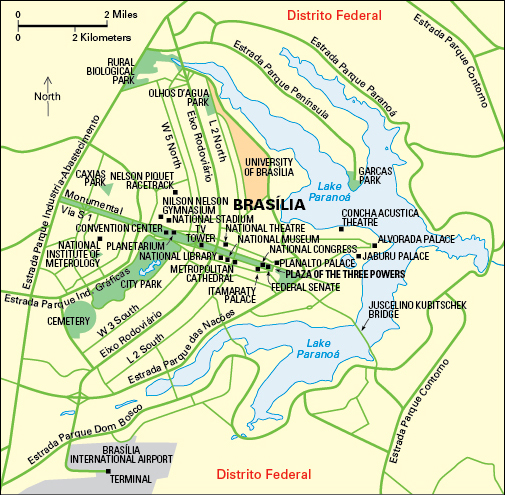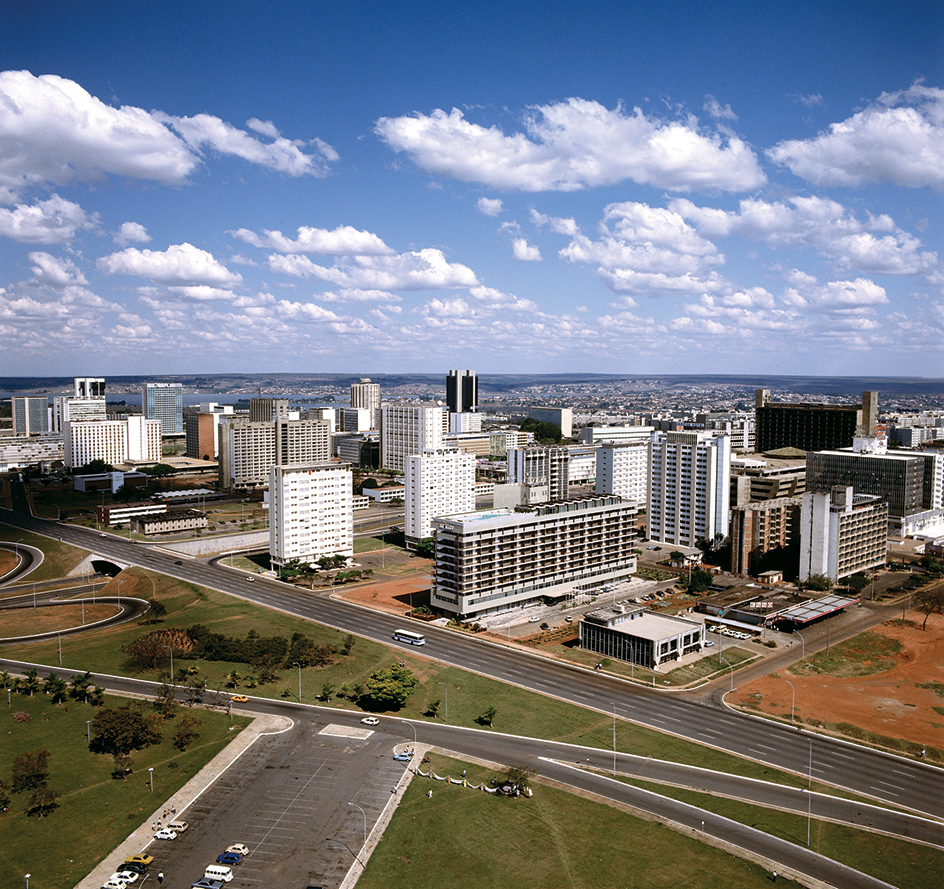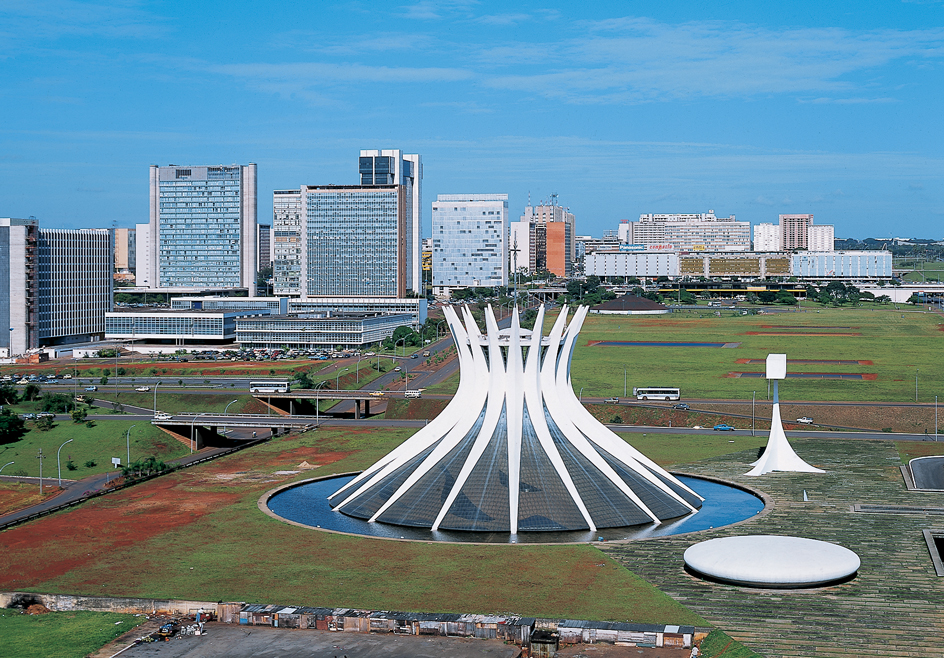Brasília << brah SEEL yuh >> is the capital of Brazil and one of the world’s leading examples of large-scale city planning. The municipality of Brasília has a population of 2,570,160. A municipality may include rural areas as well as the urban center. Brazil’s government began to build Brasília on a nearly barren site in the 1950’s. The city’s construction in central Brazil, northwest of the former capital, Rio de Janeiro, was designed to encourage the development of Brazil’s interior. The city is noted for its modern architecture and broad thoroughfares.

The city
is laid out in a pattern that, when viewed from the air, resembles the shape of a drawn bow and arrow. Federal government buildings stand near the east end of Brasília, at the tip of the arrow. This area, called the Plaza of the Three Powers, includes buildings that house the president’s office, Congress, and the Supreme Court. A large artificial lake lies east of the plaza, and the University of Brasília is nearby.


A wide boulevard lined with attractive buildings, including the striking Metropolitan Cathedral, runs west from the Plaza of the Three Powers. Business, cultural, and recreational districts, as well as a bus terminal, are in the city’s center. Farther west along the arrow’s shaft are a complex of hotels, a sports arena, and fairgrounds.
Residential areas run north and south along the curve of the bow. Rows of six-story apartment buildings house government employees and their families.
An unplanned community called Pioneer Center lies alongside the planned city. A sprawling suburb of wooden homes with a frontier atmosphere, Pioneer Center was built by laborers who constructed Brasília. Several other suburbs also have sprung up around the city.
Economy.
Most workers in Brasília work for the federal government. Other major industries include construction and commerce.

History.
Proposals to move Brazil’s capital inland began in the early 1800’s. Juscelino Kubitschek, president of Brazil from 1955 to 1960, was the leading force behind Brasília’s construction, which began in 1956. The Brazilian architect Lucio Costa developed the city plan. Oscar Niemeyer, another Brazilian architect, designed many of Brasília’s modernistic buildings.
The capital was moved from Rio de Janeiro to Brasília on April 21, 1960. The government has built highways linking Brasília with the rest of the country. These roads have helped bring commerce and settlement to Brazil’s interior. In 1987, the United Nations Educational, Scientific and Cultural Organization (UNESCO) declared Brasília a World Heritage Site—that is, an area of unique natural or cultural importance. In 2010, Brasília celebrated its 50th anniversary.
